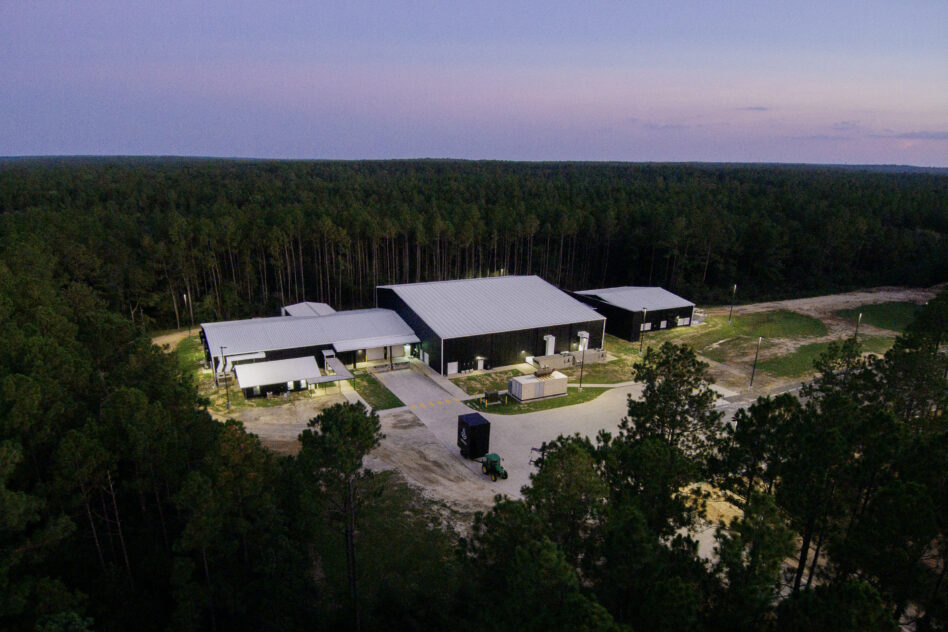The Anduril empire just keeps on growing. This morning, everyone’s favorite neoprime announced that it’s officially opened its new full-rate solid rocket motor (SRM) production facility in McHenry, Mississippi, which it says will be able to produce 6,000 tactical motors a year by the end of 2026.
The company says it invested $75M of its own capital in building the new facility, which took only 18 months to complete. In that time, Anduril says it has already test-fired 700 rocket motors and grown its Mississippi team from 40 to 100.
The build-out was also supported by the DoD’s $14.3M Defense Production Act (DPA) investment in Anduril to build out SRM production.
Limited supply: In case you didn’t know, the US has a bit of an SRM problem. To date, only two primes—L3Harris and Northrop Grumman—have dominated the market, and demand has surged with the surge in conflicts around the world, from Ukraine to Yemen.
- SRMs are the things that make missiles go far and fast. They’re needed for everything from HIMARS, to Javelins, to Stingers, to AMRAAMs and GMLRS.
- Last year, Aerojet Rocketdyne—purchased by L3Harris in 2023—reported it was thousands of rocket motors behind schedule.
- This summer, Raytheon said that the SRM shortage was still limiting missile production.
Anduril’s new facility makes it the third major player on the scene. The company first entered the SRM game when it acquired solid rocket motor company Adranos in 2023.
- In March, the company was selected by the US Army to build a new, teeny-tiny 4.75‑inch SRM for long-range precision artillery like HIMARS.
- Last June, the US Navy awarded Anduril a $19M contract to build SRMs for the Standard Missile-6 (SM-6) program. In April, the company completed two successful live fire tests.
- In June, Saab also selected Anduril to provide SRMs for the Ground-Launched Small Diameter Bomb (GLSDB) program, which it runs jointly with Boeing.
In building out the Mississippi facility, Christian Brose, president and chief strategy officer at Anduril, told Tectonic and other reporters that it is positioning itself as a “merchant supplier.” They’ll build out SRMs for their own systems, sure, but they also plan to team up with major players (read: the primes and the DoD) to meet their SRM needs.
And those needs are likely to increase even further as Golden Dome ramps up.
“We’re supporting multiple industry partners…that run the gamut of different weapons programs,” Brose said. “From the very beginning, we’ve embraced the merchant supplier identity…where we are obviously providing solid rocket motors to our own programs, but the preponderance of what we’re doing is actually supporting other teammates across the industrial base.”
Brose said they already have a “really positive relationship” with Raytheon (RTX), which runs the Standard Missile Program.
“We’ve worked closely with them in that context, as well as a host of other things as a supplier of a solid rocket motor, as a potential partner on a lot of different areas,” he added, “That relationship has been very positive, and we look forward to where it goes in the future.”
Factory of the future: Brose and Brielle Terry, vice president and general manager of rocket motor systems at Anduril, framed the new facility as a “cookie-cutter” model for SRM production of the future. They said Anduril could easily build another of these on their 450-acre Mississippi site, and that they’re looking into standing up similar setups around the country and the world.
- Terry said that a lot of current SRM production looks a lot like it did in the mid-20th century. Anduril is trying to use modern production techniques—many borrowed from the automotive industry—to bring that into the future.
- The McHenry facility is designed to be flexible. That means the production line can build anything from the tiny 4.75-inch diameter motor up to something with a 32-inch diameter, Terry said.
- Anduril says it uses digital analytics to track “every step in the production chain of custody,” and that automation and robots keep “human hands away from the riskiest tasks.”
“We are not tied to an assembly line that is geared towards one system,” Terry said, “We are specifically gearing this to be modular, to be agile, and to really be able to flex with the needs of the industrial base as we go through full-rate production.”
They’ve put a twist on the way that propellant and fuel are made, too. Anduril uses a “bladeless speedmixer” (which they say is tone-of-a-kind) to mix propellant, and a signature “ALITEC aluminum-lithium alloy fuel formulation,” which it says increases the range of their motors by up to 40 percent.
Ready to rumble: When asked what needed to happen between now and end-2026 to get the facility to full production, Terry said that they’re testing all of the new machinery, robotics, and production systems in the new facility to make sure everything’s running exactly as it should.
“You can’t, as you often hear in the startup world, fail fast, because failing fast with energetics is a very bad day,” Terry said, “We are talking about large volumes of explosive material.”

